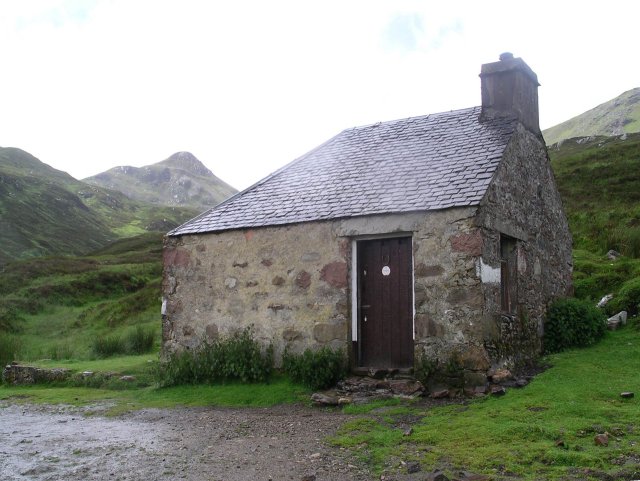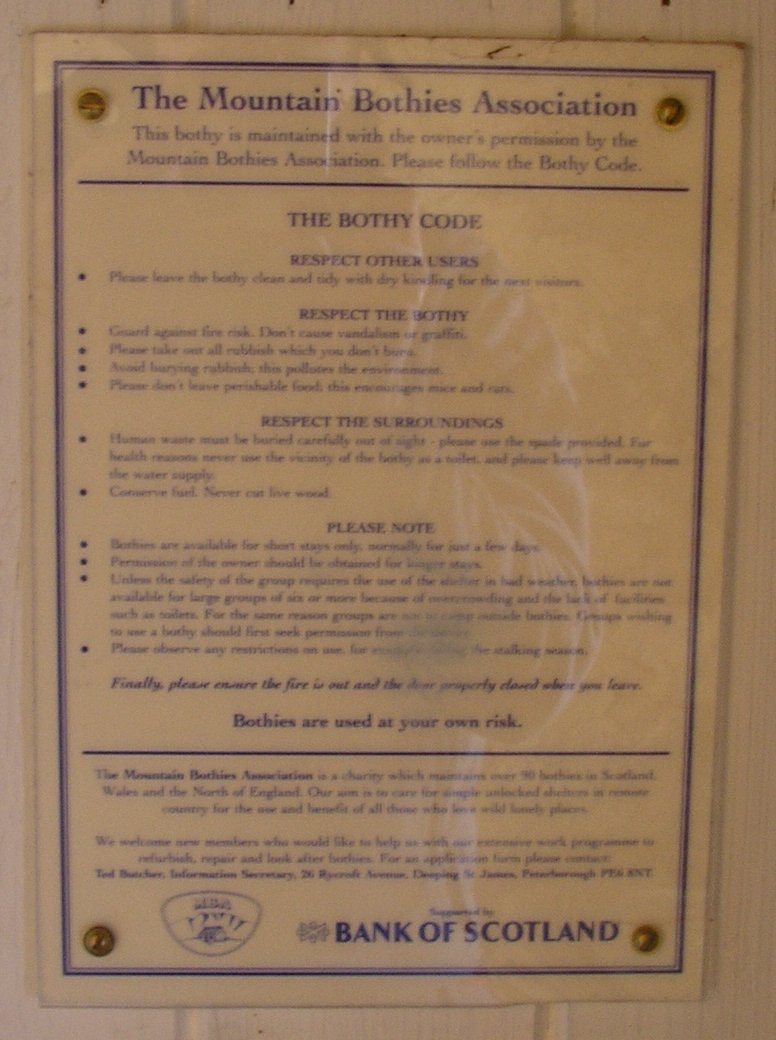What is a bothy?
From Bothies
m (What is a Bothy? moved to What is a bothy?) |
Current revision as of 19:01, 21 April 2007
In the United Kingdom a bothy is a simple shelter, generally left unlocked and available for anyone to use without charge. Bothies are to be found in remote, mountainous areas of Scotland, Northern England and Wales: they are particularly common in the Scottish Highlands (bothy may be a corruption of the Gaelic botan meaning small hut or possibly the Welsh term bwthyn also meaning small cottage, it could also be from Norse būð, cognate with English booth with a diminutive ending).
Generally speaking, most bothies are formerly ruined buildings that have been restored to a basic standard, providing a windproof and watertight shelter. They vary in size from little more than a large box up to two-storey cottages. They usually have designated sleeping areas. Commonly, these are either an upstairs room or a raised platform, thus allowing one to keep clear of cold air and draughts at floor height. No bedding, mattresses or blankets are provided. Public access to bothies is either on foot or by bicycle.
Most bothies have a fireplace, and are near a natural source of water. A spade is provided to bury excrement.
Although free, use of bothies is to some extent governed by an unwritten "bothy etiquette":
- Fuel for the fire should be brought, or if fuel stored in the bothy is used, more should be gathered to replace what is used. Many bothies are located far from any trees, though peat may provide an alternative fuel. However, peat digging is likely to be discouraged to protect the local landscape and ecology.
- The fire is to be used for warmth, not cooking, and a stove should be brought.
- Candles are usually to be found, as with fuel these should be replaced if used.
- All rubbish (except excrement, which should be buried) should be carried out
- When visiting the toilet ensure that a location away from any watercourse is used.
- Large groups and long stays are to be discouraged – bothies are intended for small groups on the move in the mountains.
Bothies are usually owned by the landowner of the estate on which they stand, though the actual owner is rarely involved in any way, other than by permitting their continued existence. Most are maintained by an organisation known as the Mountain Bothies Association (MBA), who look after around 100 bothies.
The location of bothies is not publicised widely – prior knowledge and word of mouth are often the only way of finding a bothy. (However, the Bothies Wiki hopes to change this.)


